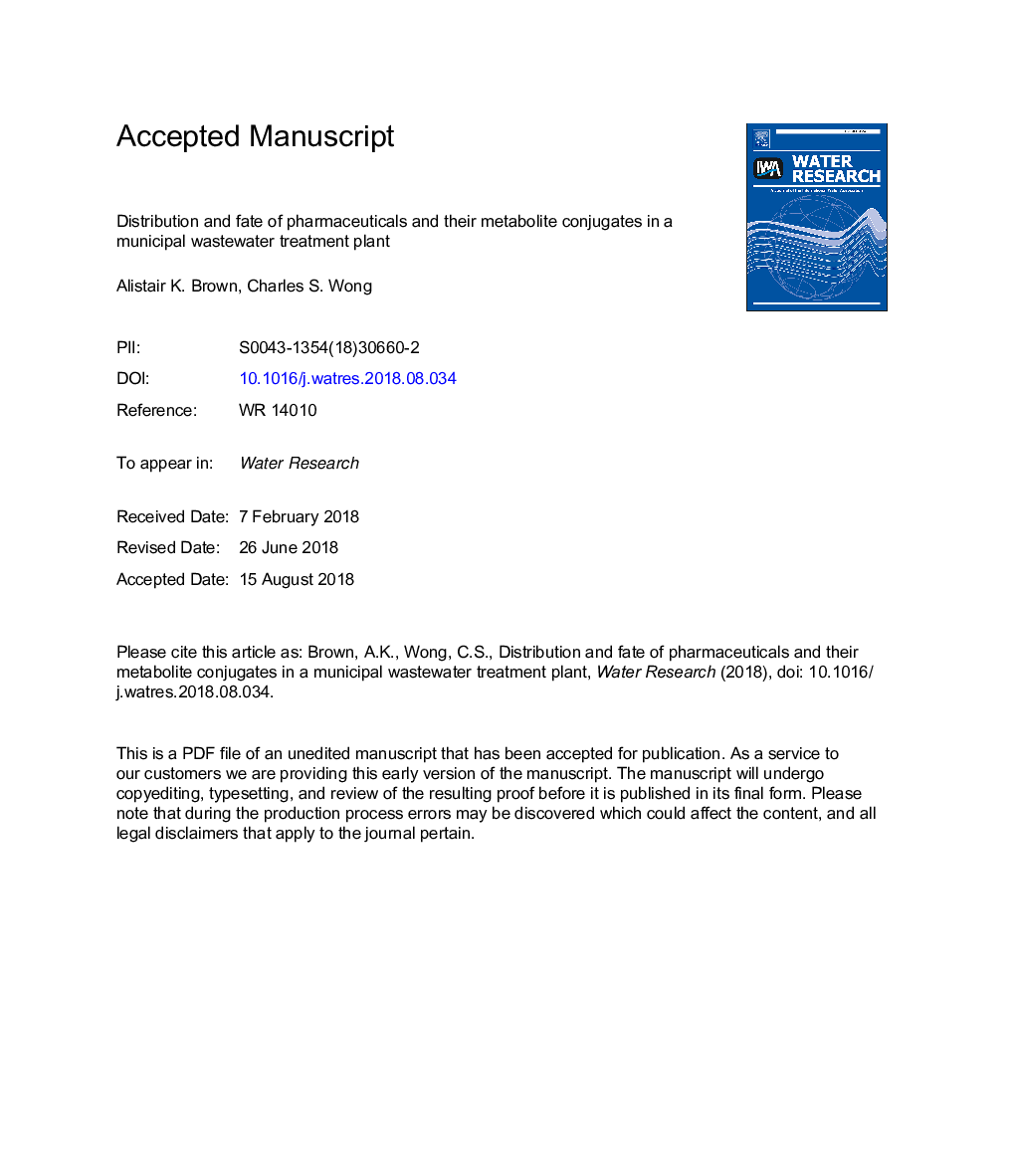| کد مقاله | کد نشریه | سال انتشار | مقاله انگلیسی | نسخه تمام متن |
|---|---|---|---|---|
| 10115997 | 1623024 | 2018 | 34 صفحه PDF | دانلود رایگان |
عنوان انگلیسی مقاله ISI
Distribution and fate of pharmaceuticals and their metabolite conjugates in a municipal wastewater treatment plant
ترجمه فارسی عنوان
توزیع و سرنوشت داروها و ترکیبات متابولیتی آنها در یک تصفیه خانه فاضلاب شهری
دانلود مقاله + سفارش ترجمه
دانلود مقاله ISI انگلیسی
رایگان برای ایرانیان
کلمات کلیدی
موضوعات مرتبط
مهندسی و علوم پایه
علوم زمین و سیارات
فرآیندهای سطح زمین
چکیده انگلیسی
Some pharmaceutical conjugates can be excreted into wastewaters at levels rivalling those of the parent compounds; however, little is known about this potential reservoir of pharmaceuticals to aquatic systems. We evaluated the occurrence and distribution of four different classes of pharmaceuticals and their metabolite conjugates in a wastewater treatment plant over four months. Aqueous and suspended solids fractions of primary, mixed liquor, secondary, and final effluent, along with return activated sludge, and waste activated sludge were assessed. The only conjugate not found in the final effluent was acetaminophen sulfate. Moreover, thyroxine and thyroxine glucuronide were the only compounds quantified in the suspended solids in the final effluent. Propranolol, propranolol sulfate, thyroxine, and thyroxine glucuronide all had no significant decreases in concentration going through the wastewater treatment process, from primary to final effluent. However, there were significant decreases observed for acetaminophen (99.8%), sulfamethoxazole (71%), N-acetyl sulfamethoxazole (59%), and sulfamethoxazole glucuronide (79%). The mean (±SEM) mass loadings in the aqueous fraction of the final effluent for each compound ranged from 0.84â¯Â±â¯0.2â¯g/d for thyroxine to 45.3â¯Â±â¯4.2â¯g/d for acetaminophen. At least as much conjugate was released into receiving waters, if not more: 1.6â¯Â±â¯0.2â¯g/d for thyroxine glucuronide to 18.5â¯Â±â¯4.5â¯g/d for sulfamethoxazole glucuronide, and 61.2â¯Â±â¯9.6â¯g/d for N-acetyl sulfamethoxazole. Additionally, the mean loading of thyroxine was 0.29â¯Â±â¯0.025â¯g/day and thyroxine glucuronide 1.8â¯Â±â¯0.59â¯g/day in the suspended solids. This equates to 26% of total thyroxine and 53% of total thyroxine glucuronide associated with suspended particulate matter that reaches receiving waters. This study reflects the importance of including phase II conjugates in assessing overall compound load of pharmaceutical discharge from wastewaters, and also that substantial amounts of such contaminants are associated with wastewater solids when drugs are in the pg/L to μg/L range.
ناشر
Database: Elsevier - ScienceDirect (ساینس دایرکت)
Journal: Water Research - Volume 144, 1 November 2018, Pages 774-783
Journal: Water Research - Volume 144, 1 November 2018, Pages 774-783
نویسندگان
Alistair K. Brown, Charles S. Wong,
